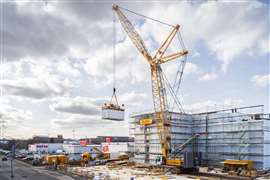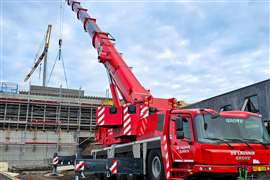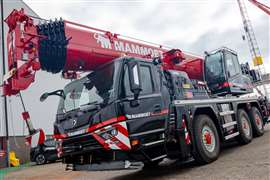Flagging traffic
20 March 2008
In the trucking, crane and rigging industry there are many projects that require professional traffic control.
In most cases state or local agencies will support you in developing a plan that satisfies all parties involved and affected by traffic control requirements.
Many states follow the Manual on Uniform Traffic Devices in addition to their respective state supplements and laws. The key to successful traffic control, whether planned or in an emergency situation, is having employees trained in traffic control procedures. Be sure to follow all state guidelines for lane closures or emergency situations.
Many states require training for the traffic control supervisor and the flagging person. For traffic control to be effective the job has to be set up properly. Necessary precaution signs must be put out in advance to warn motorists they are entering a construction area, and to let them know a flag person will be giving directions.
Motorists will be looking for the promised flag person, and should be able to identify the person wearing an ANSI-approved florescent vest. There should only be one person giving flagging directions. Do not let a group of employees near the flagging person. Motorists can easily become confused by conflicting directions. Avoid such problems by following a few basic safety rules:
A flag person should be properly trained and know what to anticipate when flagging traffic.
A flag person should wear the ANSI approved florescent vest as well as proper clothing and foot wear.
Depending on state requirements, a flag or paddle will be used. Flags must be at least 24inches square. Check state requirement for the proper paddle size.
Teach each flag person to never turn his or her back to traffic, to make eye contact wiTheach vehicle driver and to avoid waving the flag.
Flag persons should use their hands to direct traffic.
Waving the flag may create confusion on which direction the driver should go.
While there is only one right way to flag traffic, there are many wrong ways. Be sure employees are using one standardized set of signals.
Remind the flag perso that he or she is a company representative and should be courteous to the general public. A good professional impression will be remembered by the motorist.
Be sure the flag person can physically and safely perform the job task required.
In some cases, the flag person has to be especially firm with motorists to protect them from hurting themselves or others.
Flagging traffic is a dangerous job. Signs normally do a good job providing messages and directions, but constantly changing conditions often means that traffic instructions must change. In these situations welltrained flagging persons with knowledge of traffic control devices will protect the public, fellow employees, the company, and of course, themselves.
Driving in work zones requires obeying laws and following work zone safety tips:
Stay alert, be patient, expect the unexpected
Obey the posted speed limit
Avoid using mobile phones while driving in work zones
Expect delays
Reviewing traffic control procedures with management and employees will
STAY CONNECTED


Receive the information you need when you need it through our world-leading magazines, newsletters and daily briefings.
CONNECT WITH THE TEAM











